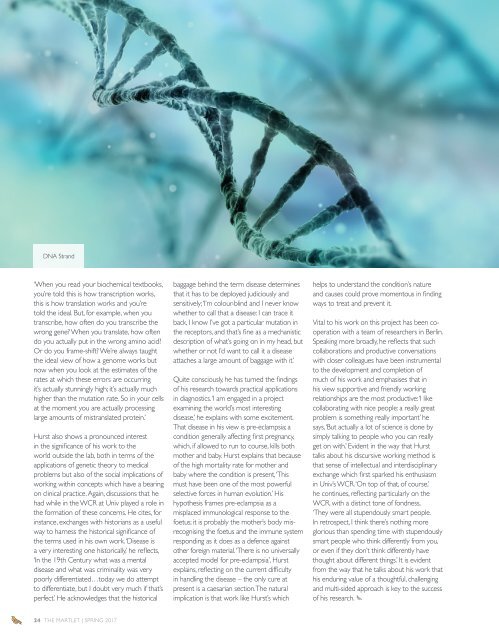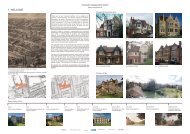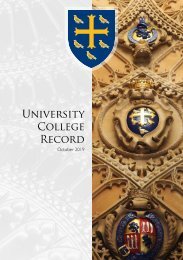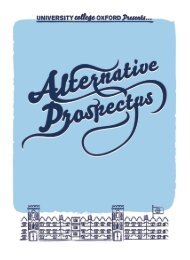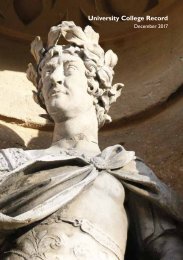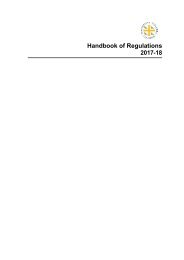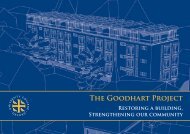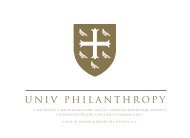Spring Martlet 2017
Spring Martlet 2017 V2
Spring Martlet 2017 V2
- No tags were found...
You also want an ePaper? Increase the reach of your titles
YUMPU automatically turns print PDFs into web optimized ePapers that Google loves.
DNA Strand<br />
‘When you read your biochemical textbooks,<br />
you’re told this is how transcription works,<br />
this is how translation works and you’re<br />
told the ideal. But, for example, when you<br />
transcribe, how often do you transcribe the<br />
wrong gene? When you translate, how often<br />
do you actually put in the wrong amino acid?<br />
Or do you frame-shift? We’re always taught<br />
the ideal view of how a genome works but<br />
now when you look at the estimates of the<br />
rates at which these errors are occurring<br />
it’s actually stunningly high; it’s actually much<br />
higher than the mutation rate. So in your cells<br />
at the moment you are actually processing<br />
large amounts of mistranslated protein.’<br />
Hurst also shows a pronounced interest<br />
in the significance of his work to the<br />
world outside the lab, both in terms of the<br />
applications of genetic theory to medical<br />
problems but also of the social implications of<br />
working within concepts which have a bearing<br />
on clinical practice. Again, discussions that he<br />
had while in the WCR at Univ played a role in<br />
the formation of these concerns. He cites, for<br />
instance, exchanges with historians as a useful<br />
way to harness the historical significance of<br />
the terms used in his own work. ‘Disease is<br />
a very interesting one historically,’ he reflects,<br />
‘In the 19th Century what was a mental<br />
disease and what was criminality was very<br />
poorly differentiated…today we do attempt<br />
to differentiate, but I doubt very much if that’s<br />
perfect.’ He acknowledges that the historical<br />
baggage behind the term disease determines<br />
that it has to be deployed judiciously and<br />
sensitively; ‘I’m colour-blind and I never know<br />
whether to call that a disease: I can trace it<br />
back, I know I’ve got a particular mutation in<br />
the receptors, and that’s fine as a mechanistic<br />
description of what’s going on in my head, but<br />
whether or not I’d want to call it a disease<br />
attaches a large amount of baggage with it.’<br />
Quite consciously, he has turned the findings<br />
of his research towards practical applications<br />
in diagnostics. ‘I am engaged in a project<br />
examining the world’s most interesting<br />
disease,’ he explains with some excitement.<br />
That disease in his view is pre-eclampsia; a<br />
condition generally affecting first pregnancy,<br />
which, if allowed to run to course, kills both<br />
mother and baby. Hurst explains that because<br />
of the high mortality rate for mother and<br />
baby where the condition is present, ‘This<br />
must have been one of the most powerful<br />
selective forces in human evolution.’ His<br />
hypothesis frames pre-eclampsia as a<br />
misplaced immunological response to the<br />
foetus; it is probably the mother’s body misrecognising<br />
the foetus and the immune system<br />
responding as it does as a defence against<br />
other foreign material. ‘There is no universally<br />
accepted model for pre-eclampsia’, Hurst<br />
explains, reflecting on the current difficulty<br />
in handling the disease – the only cure at<br />
present is a caesarian section. The natural<br />
implication is that work like Hurst’s which<br />
helps to understand the condition’s nature<br />
and causes could prove momentous in finding<br />
ways to treat and prevent it.<br />
Vital to his work on this project has been cooperation<br />
with a team of researchers in Berlin.<br />
Speaking more broadly, he reflects that such<br />
collaborations and productive conversations<br />
with closer colleagues have been instrumental<br />
to the development and completion of<br />
much of his work and emphasises that in<br />
his view supportive and friendly working<br />
relationships are the most productive: ‘I like<br />
collaborating with nice people: a really great<br />
problem is something really important’ he<br />
says, ‘But actually a lot of science is done by<br />
simply talking to people who you can really<br />
get on with.’ Evident in the way that Hurst<br />
talks about his discursive working method is<br />
that sense of intellectual and interdisciplinary<br />
exchange which first sparked his enthusiasm<br />
in Univ’s WCR. ‘On top of that, of course,’<br />
he continues, reflecting particularly on the<br />
WCR, with a distinct tone of fondness,<br />
‘They were all stupendously smart people.<br />
In retrospect, I think there’s nothing more<br />
glorious than spending time with stupendously<br />
smart people who think differently from you,<br />
or even if they don’t think differently have<br />
thought about different things.’ It is evident<br />
from the way that he talks about his work that<br />
his enduring value of a thoughtful, challenging<br />
and multi-sided approach is key to the success<br />
of his research.<br />
24 THE MARTLET | SPRING <strong>2017</strong>


